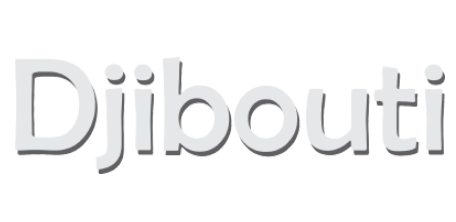
Djibouti pronounced jee-boo-tee, was a territory turned country by France in the late 19th century and became independent only in 1977. It stayed a protectorate (protected by a stronger state) and colony for more than a century before that. Djibouti had no identity as a state or national unit before 1859, when the French concluded a treaty with the local Afar sultan of Obock.
The factors that distinguish Djibouti from other countries are as follows:
- Hot and parched plains.
- An active volcano (Ardoukoba last erupted in 1978).
- The Bay of Tadjoura cutting in through the country from the Gulf of Aden.
Djibouti is strategically located at the intersection of Red Sea coast and the Gulf of Aden, surrounded by Eritrea, Ethiopia, and Somalia in the arid plains of Eastern Africa and serves as an important shipping portal for goods entering and leaving the east African highlands and trans-shipments between Europe, the Middle East, and Asia. The area is desert-like and is characterised by rocky and sandy soil, which is not suitable for agriculture. The vegetation consists of mainly desert shrubs and acacia trees with only a few patches of perennial forests.

The coat of arms comprises two bent olive branches encircling a traditional round shield. In the centre is a vertical Somali spear topped with a red star and flanked by two Afar daggers to the left and right of the shield. This symbolizes the pleasant co-existence of the two dominant communities – the Issa-Somali and the Afars.

After the independence from France in 1977, the country was left with a government, which enjoyed the harmonious balance of the two main ethnic groups – the Issa of Somali origin and the Afar of Ethiopian origin. These groups have opposed each other in the past, however, the factors that really got them holding hands were the awareness of a shared identity and national consciousness; similar religious belief in Islam, social and cultural similarities, related languages i.e. French and Arabic, only helped further cement the relationship. They are united in the wealth that the seaports of Djibouti’s bring in. The political life is shaped by compromise and so is its identity as a nation. Djibouti tries to avoid being a part of international and regional affairs of the neighbouring countries and maintains its independent position.
As most of the land is barren, major portions of the food items produced is imported. However, dairy products, meat from the herds and grain dishes sum up the traditional foods of the country. The cuisine in the urban areas is strongly influenced by Italian and other European foods. The light narcotic leaf called qat (pronounced kaht), imported from Ethiopia deserves a mention. It is as good as dessert after lunch for virtually all the men and is consumed recreationally during the midday when the government offices and work come to a standstill, as it is excessively hot.
Djibouti is a poor but developing country that depends on its strategic location, which is its only asset. A significant part of the country’s income comes from its ports through transit taxes and harbour fees. The transport facilities are largely employed by landlocked African countries to fly in their goods for re-export, particularly Ethiopia whose trade is handled exclusively by the capital, Djibouti city. The economy, as a whole is unbalanced with undeveloped agriculture and a declining livestock economy, but the majority still maintain herds and work in agriculture. Most foods however are imported. Djibouti has a few natural resources and little industry. The countryside and the working class neighbourhoods in Djibouti suffer raging poverty and the unemployment rate is too high for comfort. The banking, insurance and telecommunication sector however is budding in the region.
Being a former French colony Djibouti city was designed by the French adhering to a grid street plan with government institutions placed close to each other in the centre. The town grew fast with new neighbourhoods added in a haphazard fashion. Infrastructure and communications, except around the port and in the capital, are underdeveloped.


